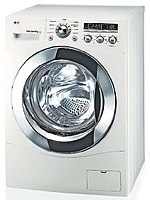
Photo from wikipedia
In Korea, for heavy metal-contaminated soil, there are insufficient basic data as well as field application cases for soil washing. This study was conducted to suggest the significant factors and… Click to show full abstract
In Korea, for heavy metal-contaminated soil, there are insufficient basic data as well as field application cases for soil washing. This study was conducted to suggest the significant factors and optimal operation conditions for the maximum heavy metal removal efficiency. Five types of washing solution [acid solution (HCl), citric acid, oxalic acid, EDTA, and CaCl2], washing time (10–360 min), and solid-solution ratio (1:2–1:100) were selected as significant operational factors. Non-observed effect concentration (NOEC) and central composite rotatable design (CCRD) were applied to derive the optimal conditions. The soil pH was slightly alkali, and it was highly contaminated by Cd (17.34 mg kg−1), Cu (307.76 mg kg−1), Pb (714.78 mg kg−1), and Zn (1755.47 mg kg−1), complexly. For all heavy metals, CaCl2, a neutral salt, was difficult to achieve the remediation goal. On the other hand, Cd, Cu, and Pb were removed successfully from the soil by acid solution, citric acid, oxalic acid, and EDTA. For Zn, only acid solution and oxalic acid could meet the remediation goal (300 mg kg−1). As the washing time increased, the heavy metal removal efficiency showed a tendency to increase overall. Especially, oxalic acid and acid solution were able to reach the highest efficiency point within 30 min, whereas citric acid and EDTA took 2 to 4 h at the longest. In the case of 1 M citric acid, through the CCRD experiment, optimal operation conditions (solid-solution ratio and washing time) could be deduced for each heavy metal. Furthermore, this series of processes can be utilized as a useful tool to find the optimal operating conditions and, at the same time, achieve the remediation goal.
Journal Title: Applied Sciences
Year Published: 2021
Link to full text (if available)
Share on Social Media: Sign Up to like & get
recommendations!